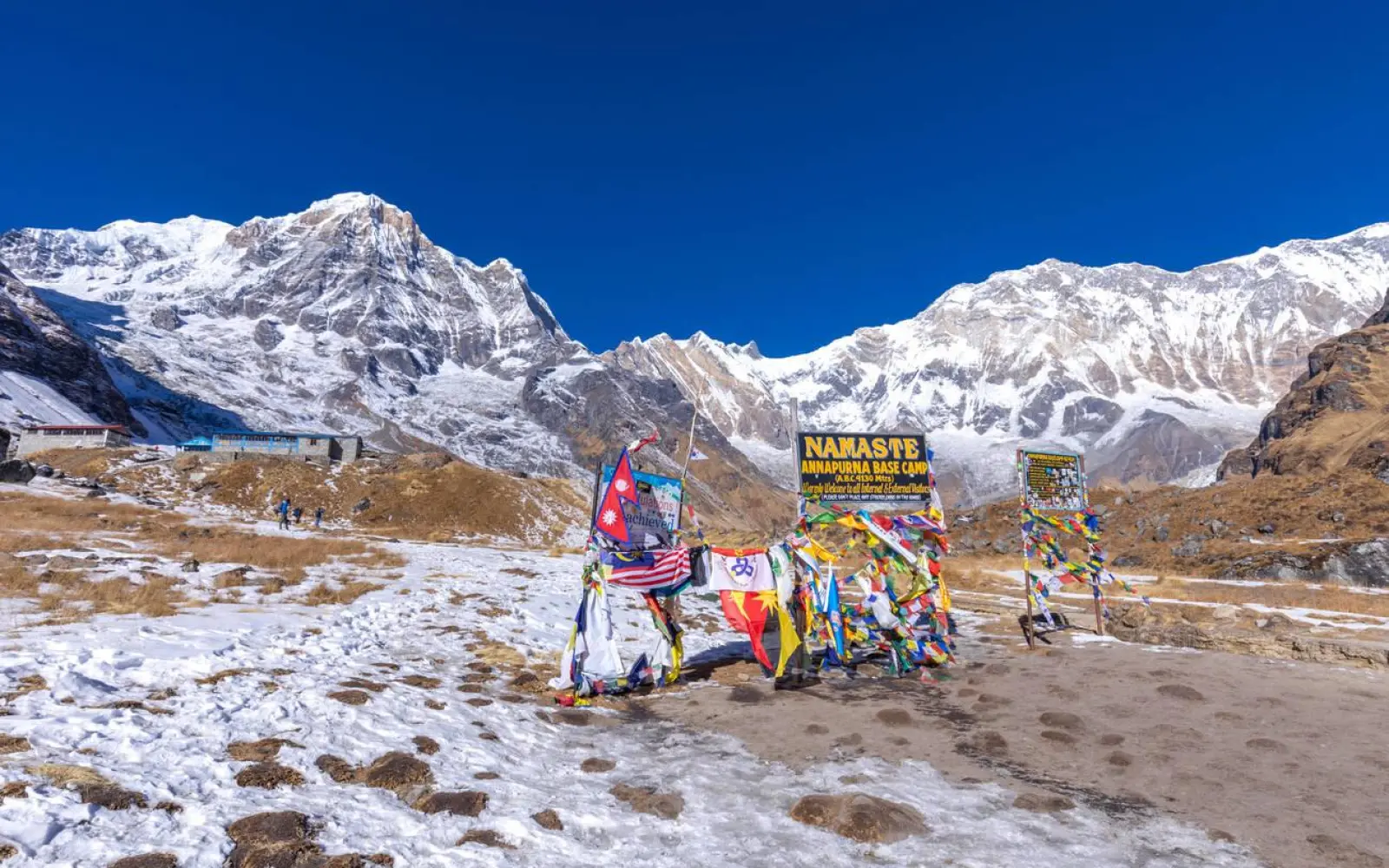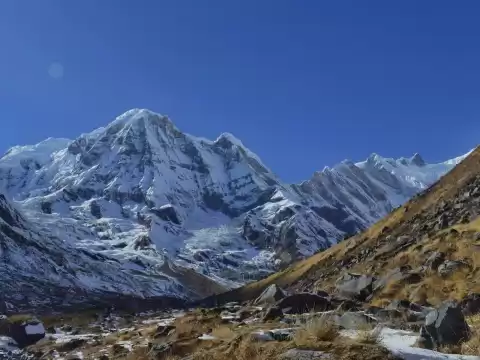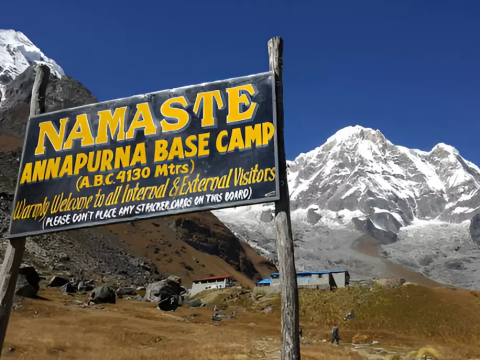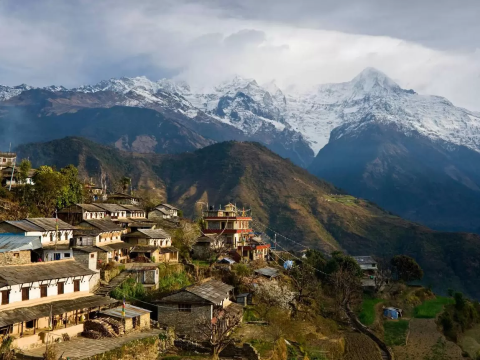Annapurna Base Camp: A Comprehensive Guide
Annapurna Base Camp, often abbreviated as ABC, is a renowned trekking destination nestled in the hea...

The Annapurna Base Camp (ABC) Trek is one of Nepal’s most iconic trekking adventures, attracting thousands of nature lovers and adventure seekers from around the world. In 2026, with improved infrastructure, eco-friendly lodges, and enhanced safety measures, trekking to Annapurna Base Camp promises an even more rewarding experience. This journey combines breathtaking Himalayan views, rich Gurung and Magar cultures, and the thrill of reaching the foot of the world’s 10th highest mountain.
Himalayan Forever Treks, a leading local trekking company, offers valuable guidance to ensure trekkers enjoy a smooth and memorable experience. By following the Top 10 Tips for a Successful Annapurna Base Camp Trek in 2026, adventurers can prepare smartly and make the most of this once-in-a-lifetime journey.
Highlights:
Trekking to Annapurna Base Camp in 2026 is more than an adventure—it’s an immersive experience in the heart of the Himalayas. The region has recently seen sustainable tourism initiatives, improved trekking routes, and enhanced communication networks, making the ABC trek more accessible and enjoyable than ever before. The panoramic views of Annapurna I (8,091 m), Machhapuchhre (Fishtail), and Hiunchuli create a magical backdrop for trekkers seeking both challenge and serenity.
Moreover, 2026 is shaping up to be a golden year for trekking in Nepal, with new eco-lodges, digital permit systems, and community-driven conservation projects. Choosing Himalayan Forever Treks ensures trekkers receive expert guidance, local insights, and a focus on safety and cultural respect. Whether you’re a first-time trekker or a seasoned hiker, the ABC trek offers something extraordinary—majestic landscapes, warm hospitality, and an unforgettable journey into the soul of Nepal.
Key Reasons to Trek in 2026:
Timing is everything for a successful Annapurna Base Camp trek. The best seasons to trek are spring (March–May) and autumn (September–November). These months offer clear skies, stable weather, and stunning mountain views. Spring brings colorful rhododendron blooms and lively trails, while autumn offers crisp air and excellent visibility.
In contrast, winter (December–February) can be harsh with snow-covered paths, and the monsoon (June–August) brings heavy rainfall and leeches, making trekking difficult. Planning your trip in the right season not only ensures safety but also enhances your experience through better photography, smoother trails, and comfortable teahouse stays.
Himalayan Forever Treks assists travelers in selecting the most suitable time based on fitness levels, interests, and desired crowd levels. Our guides monitor weather conditions closely to ensure flexibility and safety throughout the journey.
Quick Tips:
Before starting the trek, obtaining the right permits is crucial. For the Annapurna Base Camp route, trekkers need two main permits: the Annapurna Conservation Area Permit (ACAP) and the Trekkers’ Information Management System (TIMS) card. These permits help fund local conservation projects and ensure the safety of trekkers through tracking and information management.
In 2026, the Nepal Tourism Board and local authorities have simplified the process with digital permit systems, allowing trekkers to apply online or through authorized agencies like Himalayan Forever Treks. Our team assists clients with quick and hassle-free processing, ensuring all documentation is accurate and valid before departure.
Having your permits ready in advance saves time and avoids potential delays at checkpoints. It also shows respect for local regulations and contributes to sustainable tourism in the Annapurna region.
Permit Checklist:
The Annapurna Base Camp trek is a moderately challenging journey that requires both physical fitness and mental readiness. Trekkers will walk for 5–7 hours daily on steep, uneven trails that ascend and descend through forests, villages, and stone steps. Building endurance, strength, and stamina before the trek will make your experience much more enjoyable and less tiring. It’s recommended to start training at least 8–10 weeks before departure with a mix of cardio, leg workouts, and hiking practice.
Mental preparation is equally important. Trekking in the Himalayas often brings unpredictable weather, basic facilities, and physical fatigue. Having a positive mindset and flexibility helps you adapt to any challenges along the way. Himalayan Forever Treks emphasizes preparation as a key success factor, providing guidance on pre-trek fitness routines and mental conditioning techniques to help clients feel confident before hitting the trail.
Preparation Tips:
Packing efficiently is one of the secrets to a successful trek. Carrying too much weight can make the journey exhausting, while under-packing can leave you unprepared for changing conditions. The key is to find a balance—carry only what’s essential and suitable for the Himalayan climate. Your backpack should ideally weigh no more than 8–10 kg.
Pack versatile clothing layers that can adapt to both warm days and cold nights. Include a good down jacket, moisture-wicking base layers, thermal wear, gloves, and a rain cover. A reliable backpack, sleeping bag, and reusable water bottle are also must-haves. Himalayan Forever Treks provides clients with a detailed packing checklist and can help arrange gear rentals in Kathmandu or Pokhara to reduce extra costs.
Packing Tips:
Proper footwear and quality gear can make or break your trek. The trails to Annapurna Base Camp are a mix of rocky paths, stone steps, and muddy sections, so wearing the wrong shoes can lead to blisters, discomfort, or injuries. Invest in a pair of high-quality trekking boots that are waterproof, provide good ankle support, and are well broken-in before the trip.
Similarly, your trekking poles, backpack, and clothing layers should be suited for long-distance hiking. Avoid buying gear at the last minute—test everything in advance to ensure comfort. Himalayan Forever Treks recommends reputable brands and offers advice on the best gear choices for Nepal’s diverse terrain. Our guides also perform pre-trek gear checks to ensure trekkers are fully equipped and safe.
Gear Essentials:
Even though the Annapurna Base Camp trek doesn’t reach extreme altitudes (maximum ~4,130 m), acclimatization is crucial to avoid Altitude Mountain Sickness (AMS). The body needs time to adapt to lower oxygen levels at higher elevations. Rushing the ascent increases the risk of headaches, nausea, and fatigue.
Himalayan Forever Treks designs its itineraries with proper acclimatization days and gradual altitude gain. Our experienced guides monitor trekkers’ health daily and offer advice on hydration, rest, and nutrition. Listening to your body and communicating any symptoms early is essential for safety. If symptoms worsen, descent is the best remedy.
Acclimatization Tips:
Maintaining good hydration and nutrition is vital for energy and endurance. The combination of altitude, dry air, and long trekking hours can lead to dehydration without you realizing it. Aim to drink at least 3–4 liters of water daily. Carry a reusable water bottle and use water purification tablets or filters to refill safely from local sources.
Equally important is your diet. The teahouses along the Annapurna trail serve nourishing meals like dal bhat (rice and lentil soup), noodles, and vegetable soups that provide essential carbohydrates and proteins. Avoid skipping meals or relying on processed snacks alone. Himalayan Forever Treks encourages trekkers to follow balanced diets and provides information about the best hygienic food options available on the route.
Nutrition & Hydration Tips:
The Annapurna region is home to diverse ethnic communities, primarily Gurung and Magar people, known for their rich culture, hospitality, and deep spiritual connection to the mountains. As a guest in their land, showing respect for local customs enhances your trekking experience and helps preserve cultural integrity. Simple gestures like greeting with “Namaste,” dressing modestly, and asking before taking photos go a long way in creating positive interactions.
Himalayan Forever Treks encourages all trekkers to engage with local traditions respectfully. Visit monasteries, participate in local festivals if invited, and learn about Nepalese lifestyles. The trek is not just about mountains—it’s about connecting with the people who live harmoniously among them. Supporting local businesses, buying handicrafts, or eating at family-run teahouses helps sustain the community economy and keeps traditions alive.
Cultural Respect Tips:
The beauty of the Annapurna region depends on how responsibly visitors behave. Practicing the “Leave No Trace” principle ensures that the environment remains pristine for future generations. Avoid littering, carry reusable items, and minimize plastic waste. Even small actions—like refilling bottles instead of buying disposable ones—make a big difference in protecting this fragile ecosystem.
Himalayan Forever Treks is committed to sustainable tourism. Our treks promote eco-friendly practices such as waste management, biodegradable products, and carbon offset programs. We also encourage trekkers to avoid disturbing wildlife, stay on designated trails, and respect local conservation rules. When you trek responsibly, you become part of a global effort to preserve the Himalayas.
Eco-Friendly Trekking Tips:
While the Annapurna Base Camp trek can be done independently, hiring a guide or porter greatly enhances safety, comfort, and cultural understanding. Experienced guides provide valuable insights about the mountains, local traditions, and flora and fauna. Porters, on the other hand, ease the physical burden, allowing trekkers to focus on enjoying the journey rather than managing heavy loads.
With Himalayan Forever Treks, every guide and porter is trained, licensed, and insured. We ensure fair wages, ethical treatment, and safety for our staff—values that reflect our dedication to responsible trekking. Having a local companion not only supports the community but also ensures you stay on the right path, avoid hazards, and make meaningful connections throughout the journey.
Benefits of Hiring a Guide/Porter:
In today’s digital world, it’s easy to focus on getting the perfect photo—but the true magic of the Annapurna Base Camp trek lies in the experience itself. Take moments to pause, breathe, and absorb the grandeur of the Himalayas without a lens between you and the view. Meaningful memories come from connection—with nature, with people, and with yourself.
Himalayan Forever Treks encourages travelers to balance photography with mindfulness. Capture a few stunning shots, but also allow time to live fully in the moment. Enjoy the sound of prayer flags fluttering in the wind, the laughter in teahouses, and the satisfaction of reaching the base camp after days of effort.
Memory-Making Tips:
The Annapurna Base Camp trek in 2026 offers a transformative experience—an extraordinary blend of adventure, culture, and natural beauty. With proper planning, preparation, and respect for local traditions and the environment, your journey will be not just successful but deeply fulfilling. Following these top 10 tips from Himalayan Forever Treks ensures a safe, responsible, and life-changing adventure.
Our experienced team is dedicated to guiding trekkers every step of the way, from permit arrangements to cultural briefings and eco-friendly practices. When you trek with Himalayan Forever Treks, you’re not just hiking to a destination—you’re becoming part of a community that values authenticity, sustainability, and connection.
Final Takeaways:

Annapurna Base Camp, often abbreviated as ABC, is a renowned trekking destination nestled in the hea...

The Annapurna Base Camp Trek is one of the most iconic trekking routes in Nepal, offering an extraor...

The Everest Base Camp (EBC) Trek and Annapurna Base Camp (ABC) Trek are two of the most iconic and s...
